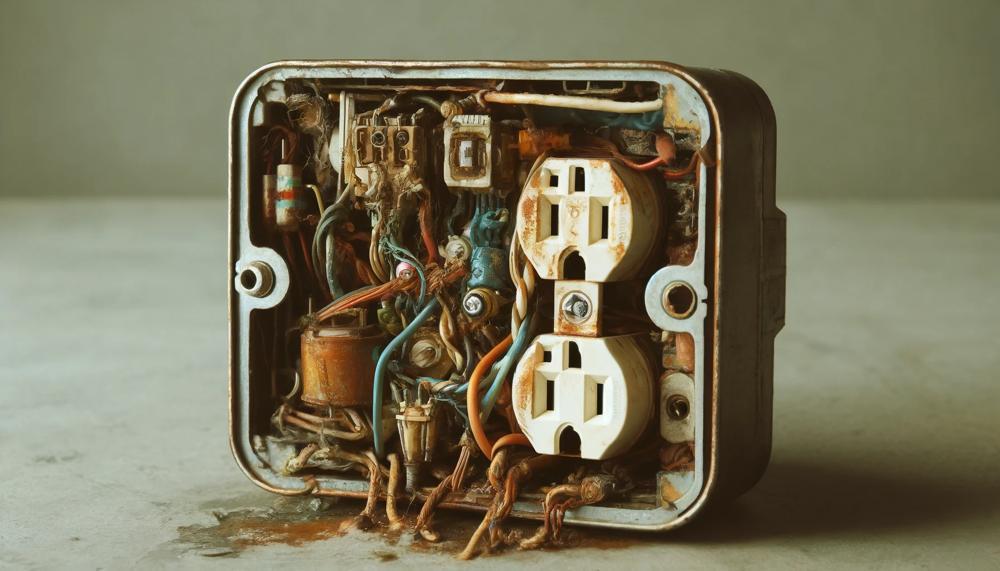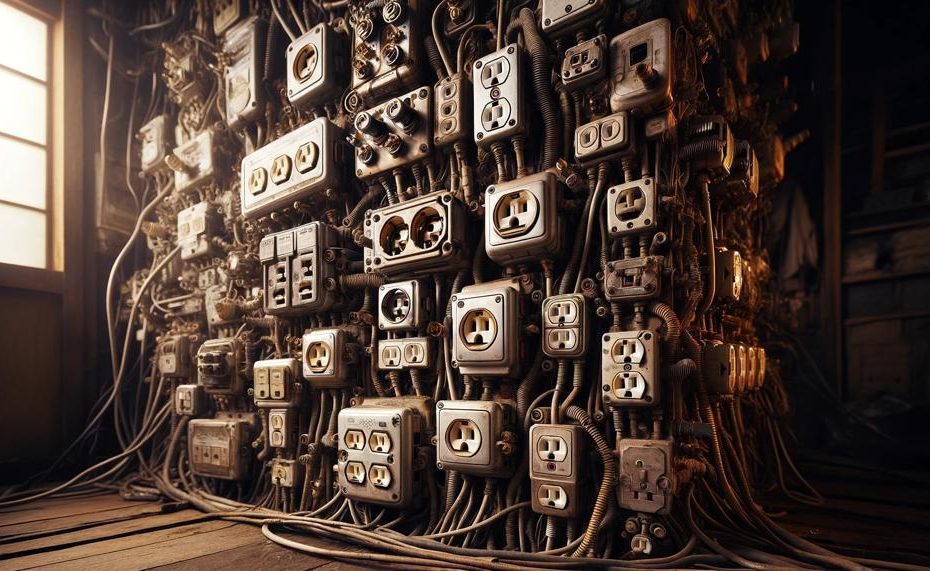Sometimes it’s tough to understand why the plug at the bottom of the house works fine but the one at the top doesn’t. It’s a pain when you need to plug in a lamp or charge your phone. The whole group has been there.
Let’s take a closer look at what might be wrong before you go crazy and call an electrician.
So, why is top outlet not working but the bottom is?
There could be several reasons why the top outlet is working but the bottom one isn’t. Here are some possible causes:
- Duplex or Half-Hot Outlets: These outlets allow you to plug in two appliances at once. One plug remains permanently on, while the other half turns on and off by another ordinary wall switch. If you have switched off the ordinary wall switch, the bottom outlets will sometimes not work, but the top outlet will keep working.
- Backstabbed Wiring: This refers to a method of wiring where the wire is pushed inside the connector, where it grabs the wire1. This can create a loose connection that results in burnout. The top outlet might keep working while the bottom one will not work anymore.
- Incorrect Use of Wire Nuts: Wire nuts are used to keep the wires together and covered to prevent them from getting too twisted1. If the nuts are used incorrectly, one of your outlets, either top or bottom, stops working, while the other will still work.
- Broken Tabs or Damage to the Entire Unit: If the top outlet works but not the bottom, then there might be possible problems like broken tabs, or damage to the entire unit.
So, let’s unravel this mystery and discover why your top outlet is acting up while its partner is working just fine.
Contents
Why is my top outlet working but not the bottom?
There could be several potential explanations as to why the top outlet is functioning while the bottom one is not. These may include poorly wired connections, incorrect metal wires being used, switched plugs, improper use of wire nuts, broken tabs, or damage to the entire unit.
One common mistake that can lead to issues with the outlet’s functionality is backstabbed wiring, which involves attaching wires to the back of the outlet instead of wrapping them around screws. This method of wiring is not only unsafe but also incorrect.
Another error that can cause problems is mixing copper and aluminum wires. This can result in corrosion and overheating, making it crucial to use the appropriate type of metal wire when wiring an outlet.
In some cases, the bottom outlet may be controlled by a wall switch that has been turned off, causing it to appear non-functional. This is known as switched plugs and can easily be resolved by flipping the switch.
Wire nuts are small plastic caps used to connect wires in an outlet. If they are not properly used or are damaged, they can lead to loose connections and sparks, ultimately causing the outlet to stop working.
Broken tabs on an outlet are metal pieces that link the top and bottom outlets together. If these tabs become damaged or broken, it can impact the overall functionality of the outlet and cause the bottom one to fail.

Lastly, damage to the entire unit can also be a reason for issues with the outlet’s performance. This damage may be due to wear and tear over time or a power surge. In such cases, replacing the entire unit would be the best solution to ensure proper functioning and avoid any potential safety hazards.
How do I fix the bottom outlet not working?
There are multiple potential causes for why the top outlet may not be operational while the bottom one is still functioning. These include the use of backstabbed wiring, combining copper and aluminum wires, switched plugs, improper utilization of wire nuts, broken tabs, or damage to the entire unit. To fix and troubleshoot this issue, follow these steps:
- Check for backstabbed wiring: If the outlet was wired using the backstabbing technique, where wires are pushed into holes in the back of the outlet rather than wrapped around screws, it can lead to poor connections and result in malfunctioning outlets. In this case, you will need to replace the outlet with a new one that has screw terminals.
- Inspect for mixed metal wires: If copper and aluminum wires were used together in the wiring, it can cause corrosion and overheating. Carefully examine the wires and if this is found to be the situation, replace them with wires of the same metal.
- Check for switched plugs: It is possible that the top outlet is controlled by a wall switch, which may have been accidentally turned off. Be sure to check all wall switches and turn them on if necessary.
- Evaluate wire nut usage: Wire nuts are utilized to connect wires together, but if they are not used correctly or are old and worn out, they can cause loose connections and sparks. Inspect the wire nuts and replace them if needed.
- Examine broken tabs: Most outlets have small metal pieces known as tabs that connect the top and bottom outlets. If these tabs are broken, it can cause one outlet to function while the other does not. In this case, you will need to replace the entire outlet.
- Look for damage to the entire unit: If none of the above troubleshooting steps resolve the issue, it is possible that there is damage to the entire unit itself. This can occur due to regular wear and tear or electrical surges. In this case, it is best to replace the outlet with a new one.
Will a bad outlet disturb the other working outlets?
If one outlet is not functioning properly, it can potentially impact the functionality of other outlets in the same circuit.
As a result, if there is a disruption in the flow of electricity at one outlet, it can cause issues with the other outlets in the series.
Why does an outlet stop working?
There are numerous typical explanations for an outlet to suddenly cease functioning, including malfunctioning internal socket links, a tripped circuit breaker, loose connections within the circuit breaker box, flawed wiring, a tripped AFCI/GFCI outlet or circuit breaker, switch-controlled outlets, and defective receptacles caused by faulty electrical wiring.
It is crucial to promptly address these issues to prevent potential hazards and interruptions in the electrical system of your abode.
Conclusion
In conclusion, having an outlet at the top that doesn’t work while the one at the bottom does can be annoying.
In any case, it’s important to know how outlets work and what might go wrong with them before drawing any conclusions and asking for help. There are many things that could be wrong, ranging from bad wiring to broken parts.
Using a voltmeter or looking for broken connections are some easy steps you can take to figure out what’s wrong and maybe fix it yourself. But if the problem keeps happening, it’s best to get help from an experienced plumber to make sure everything is safe and fixed correctly.
So, the next time you have a top outlet that doesn’t work, read this piece again to learn how to properly analyze and fix the problem.





